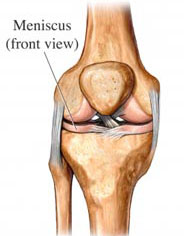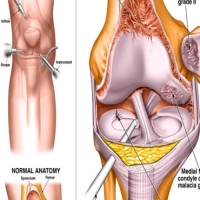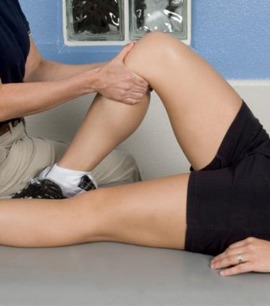What is a Meniscus Tear?
A meniscus tear is a quite common knee injury especially among athletes who play contact sports such as basketball, American football, and a few others. This type of tear indicates a partial or complete rift in the C-shaped cartilage in the knee that acts as a primary shock-absorber.
Causes of a Medial Meniscus Tear
In most cases, athletes twist or overextend their knees, which cause the cartilage to tear in one or more places. Direct contact (i.e. getting tackled or knee-locking with another player) can also cause a tear, which can be more or less serious than a twisted knee. Age is not a common factor in meniscus tears, but it is possible for the elderly to be more prone to this type of knee injury. Old age can weaken the structural integrity of the cartilage, making it more vulnerable.
Signs and Symptoms of a Medial Meniscus Tear
 Feeling a pop in the knee area: Since this is quite a trauma, there is an unmistakable feeling of something snapping in one or both your knees when the tear occurs.
Feeling a pop in the knee area: Since this is quite a trauma, there is an unmistakable feeling of something snapping in one or both your knees when the tear occurs.
Sharp pain in one or both knees: In many cases, the pain immediately follows the pop. However, for some patients, there is a latency period where pain is either absent or almost negligible. The pain is often described as sharp and throbbing, which can be expected to get worse if/when pressure is applied on the knees. Walking often makes the pain worse so keeping the knees immobile is highly recommended.
Weakness of the Knees:This is often accompanied by the feeling of the knees “giving way”, which would make walking quite difficult or completely impossible until the tear has been fixed. Knees locking or catching may also be experienced especially when you force motion.
Swollen Knee : Within minutes to a few hours after the occurrence of meniscus tears, the knees can become quite swollen and stiff. At this point, one’s range of motion would be severely compromised. Even standing or shifting one’s sitting position can become very difficult.
Surgery for a Medial Meniscus Tear
When the RICE (Rest, Ice, Compression, and Elevation) approach does not work, it usually indicates a more severe tear that would require a surgical procedure. Depending on the results of the MRI and/or knee X-rays, there are a number of possible surgeries that would be performed to treat the tear and prevent further damage.
Meniscectomy: This procedure involves trimming away the compromised meniscal tissue, while preserving what remains intact. In case of Grade 3 tears, the orthopedic surgeon may have to do either an Arthroscopic Partial Meniscectomy or Arthroscopic Total Meniscectomy.
Arthroscopic Repair: This surgery is done by inserting an arthroscope into the damaged knee in order to fully assess the extent of the tear. A small dart-like device is used to hold the tear together. This device is absorbed by the body over time and becomes part of the newly repaired ligament. This type of procedure falls under the less invasive category of surgical methods since it only requires one or two incisions. Since there are fewer traumas involved, the patient can leave the hospital that very same day and recuperate at home.
Exercises for a Medial Meniscus Tear
Post-surgical patients are advised to wear a knee brace after the surgery. After a follow-up check up and as soon as the orthopedic physician has determined that the incision has fully healed, exercises will be recommended to completely recover from a torn meniscus.
The following are some recommended exercises :
Strength and Flexibility Workouts
You will start with low impact exercises that would test how well your knee is healing. Stretching exercises are most common for patients who are about 6-8 weeks of surgery. The goal is to get your knees used to movements without necessarily exacerbating your condition. Your rehab specialist would guide you through the specifics.
Light Squats
Once the patient get over the hump (this is usually the first two weeks of physical rehab), more demanding routines are recommended in order to restore full range of motion. Once the knees start to heal, they need regular exercises in order for the joints to regain their former function. Take it slow in the beginning.
In most cases, patients who have previously suffered from torn medial collateral ligaments are advised to keep active by walking a few blocks during the day for about 15-30 minutes.




